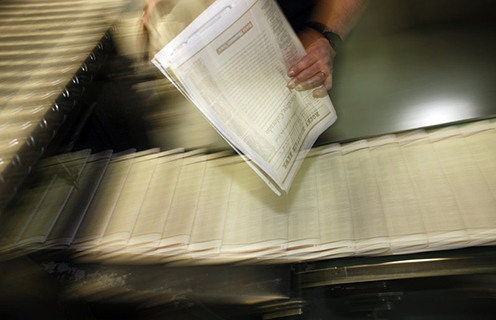By DAVID BAUDER
NEW YORK (AP) — The nation’s partisan divide is evident when Americans are asked about what should be done to help the nation’s struggling local news industry.
While two-thirds of Democrats say news organizations in need should be able to receive government or private funding in order to survive, only 17 percent of Republicans feel the same way, according to a study released Sunday by Gallup and the Knight Foundation. For independents, 37 percent back such funding.
Republicans are also more likely to take a sink-or-swim attitude toward the press. While 72 percent of Democrats say local newspapers are vital and should be preserved even if they’re failing financially, 76 percent of Republicans say they’re just like any other business and if they can’t hack it, tough luck.
“It’s not surprising to me to see the level of polarization in general shading most people’s views toward anything to do with the media,” said Sam Gill, vice president for communities and impact and special adviser to the president at the John S. and James L. Knight Foundation.
Republicans are more likely to view the media as hostile and biased, along with having a deep-seated suspicion toward government involvement in the public discourse, he said.
Local news has suffered over the past two decades as readers and advertisers found alternatives online. More than 2,000 local newspapers in the United States have closed since 2004, according to the University of North Carolina.
One barrier toward halting that trend is a lack of public awareness: The Knight/Gallup study found that 56 percent of Americans wrongly believe that local news organizations are doing well financially.
There are positive signs. The survey found that nearly six in 10 Americans consider newspapers an important symbol of civic pride. Eighty-six percent of those polled said everyone should have access to local news.
But the number of people supporting news has dwindled. The survey said 30 percent of adults say they pay a monthly or annual fee to a news source. Roughly half of the people who said they have subscribed to a news source in their lifetime no longer do so, and 44 percent said they had stopped paying for at least one type of subscription over the past five years.
The organizations took two surveys over the summer that included 1,701 people chosen by random sampling to be on a Gallup panel. The margin of error is plus or minus 3 percentage points.
Gill said journalists have been adjusting the way they produce news to accommodate the changing ways in which Americans access it.
“I think we should be asking the same questions about the business,” he said.




